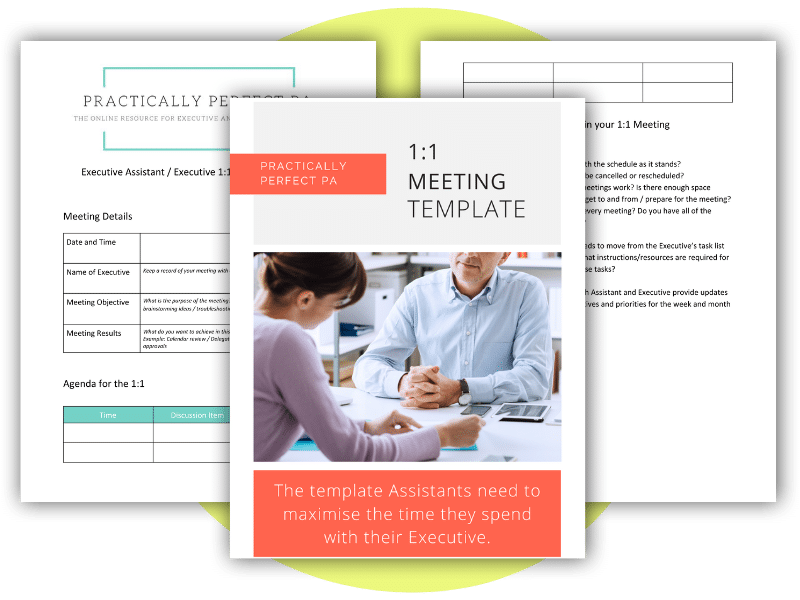Ensuring Your One-to-One Meeting Stays in Your Executive’s Schedule
For Assistants, the one-to-one meeting with their Executive is a pivotal point in your workweek. It’s when you can align your tasks, clarify doubts, and ensure you’re on the same page with your Executive. However, many Assistants often find their meetings cancelled, shortened, or overlooked. This article aims to provide a comprehensive guide for Assistants on how to ensure that one-to-one meetings with Executives remain a priority.
The Importance of One-to-One Meetings
We all know that the one-to-one meetings are not just about catching up. They are so much more and should be treated as such. They are about ensuring that the Assistant and the Executive are aligned in their goals, tasks, and priorities. These meetings:
- Keep Assistants informed and in the loop.
- Provide clear direction and priorities.
- Reduce miscommunications and misunderstandings.
- Set clear expectations and ensure efficient work completion.
- Save time by reducing the need for constant schedule adjustments.
Challenges Faced by Assistants
However, there are challenges regarding the one-to-one meeting, and I tend to find these challenges stem from two clear camps. There are two primary groups of Assistants when it comes to one-to-one meetings:
- Those whose Executives don’t see the value in regular meetings.
- Those who themselves prioritise other meetings over their own.
For the first group, communicating the benefits of these meetings is essential. Executives might not realise the value of a structured, regular check-in unless it’s presented to them. For the second group, it’s crucial to understand that their time with the Executive is as valuable as any other meeting, if not more.
Structuring the One-to-One Meeting
To ensure the meeting is productive, it should be well-structured. Here’s a suggested structure:
- Agenda Setting: Before the meeting, set a clear agenda. Use collaboration tools to input discussion points.
- Review of the Schedule: Discuss any issues with the current schedule, potential rescheduling needs, and preparation for upcoming meetings.
- Delegation of Tasks: Determine which tasks need to be moved from the Executive to the Assistant and what resources are required.
- Update on Current Tasks: Use the PPP method (Progress, Plans, Problems) to update each other on current tasks.
Best Practices for One-to-One Meetings
- Rename the Meeting: Instead of “one-to-one,” consider naming it “Business Update” to emphasise its importance.
- Focus on Business: The meeting should be about urgent business matters, not personal catch-ups.
- Prioritise Topics: Don’t try to cover everything. Focus on the most critical items.
- Take Charge: This is the Assistant’s meeting. Ensure you’re actively participating and driving the agenda.
- End with Clear Actions: Always conclude with a clear set of action items and responsibilities.
Timing and Frequency
The timing of the one-to-one meeting can vary based on the executive’s schedule and preferences. However, it’s generally a good idea to have it either at the start of the week (to plan ahead) or at the end (to review and prepare for the next week). Additionally, consider scheduling a short catch-up mid-week to address any urgent matters.
One-to-one meetings between assistants and Executives are crucial for organisational efficiency. By structuring these meetings effectively, communicating their importance, and ensuring they remain a priority, Assistants can ensure they always have the time they need with their executives to drive the business forward.





